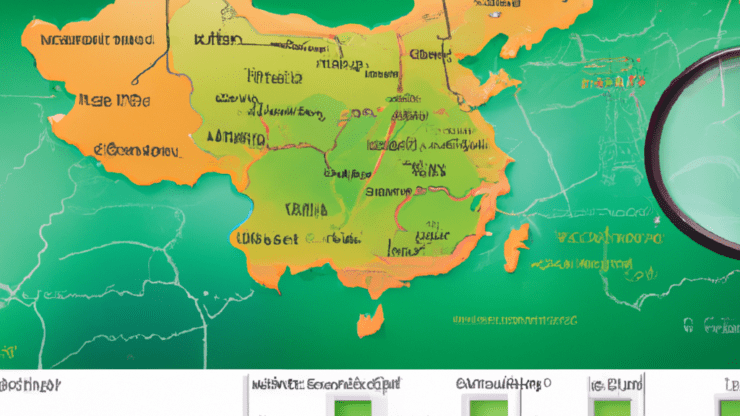In a world filled with unexplained mysteries, few phenomena capture the imagination quite like Unidentified Aerial Phenomena (UAPs). These enigmatic sightings have puzzled scientists, ignited public interest, and sparked countless debates.
But what exactly are UAPs, and where do they come from?
In this article, we will delve into the fascinating world of UAPs, unraveling the mystery surrounding them and exploring their intriguing origins.
Jump to Section
Introduction
From ancient civilizations to modern times, reports of unidentified objects in the sky have been documented.
These objects, often referred to as UAPs or UFOs (Unidentified Flying Objects), have caught the attention of researchers, skeptics, and enthusiasts alike.
While some dismiss these sightings as mere hoaxes or misidentifications, others believe they hold the key to unraveling the mysteries of the universe.
Understanding UAP: Unraveling the Mystery
What is a UAP?
A UAP, or Unidentified Aerial Phenomenon, refers to any object or light in the sky that cannot be readily identified or explained.
These objects exhibit unusual flight characteristics, defy known aerodynamic principles, and often lack visible means of propulsion.
UAPs come in various shapes and sizes, ranging from glowing orbs and saucer-like crafts to triangular formations and high-speed streaks.
Characteristics and Behaviors of UAPs
- UAPs often exhibit extraordinary maneuverability, defying the laws of physics as we know them.
- They can accelerate, decelerate, and change direction at speeds and angles that surpass conventional aircraft capabilities.
- UAPs have been reported to hover silently or emit strange noises and vibrations.
- Witnesses often describe UAPs as emitting bright lights or changing colors.
- Many UAP sightings are accompanied by electromagnetic disturbances and interference with electrical equipment.
The History of UAP Sightings
Reports of UAP sightings can be traced back centuries, with ancient civilizations documenting encounters with strange aerial objects. However, it was after World War II, with the advent of modern aviation, that UAP sightings surged.
The infamous Roswell incident in 1947, where an alleged extraterrestrial craft crashed in New Mexico, marked a turning point in UAP research and ignited public interest.
Debunking Misconceptions: UAPs vs. UFOs
The terms UAP and UFO are often used interchangeably, but it’s important to clarify the distinction between them.
While UAP refers to any unidentified aerial phenomenon, UFO specifically denotes an unidentified flying object.
In other words, while all UFOs are UAPs, not all UAPs are necessarily UFOs. UFOs can be explained as conventional aircraft, weather phenomena, or other known objects, while UAPs defy current explanations.
Investigating UAPs: Government Programs and Initiatives
Governments around the world have taken an active interest in investigating UAP sightings.
Classified programs such as the United States’ Advanced Aerospace Threat Identification Program (AATIP) and the French GEIPAN have sought to gather data, analyze sightings, and determine potential threats or scientific breakthroughs.
These initiatives involve collaboration with military personnel, scientists, and experts from various fields.
| Government Programs and Initiatives | Country | |
|---|---|---|
| United States | Advanced Aerospace Threat Identification Program (AATIP) | |
| France | Group for the Study and Information on Unidentified Aerospace Phenomena (GEIPAN) | |
| Chile | Committee for the Study of Anomalous Aerial Phenomena (CEFAA) | |
| United Kingdom | Unidentified Aerial Phenomena (UAP) Task Force |
Theories and Explanations: What Could UAPs Be?
Extraterrestrial Hypothesis: Are UAPs Aliens?
One of the most intriguing theories surrounding UAPs is the possibility of extraterrestrial origins. The idea that these objects could be piloted by intelligent beings from other worlds has captured the attention of many.
Supporters of the extraterrestrial hypothesis point to the extraordinary flight capabilities and technological advancements exhibited by UAPs as evidence of advanced civilizations beyond our planet.
Advanced Military Technology: A Human-Made Origin?
Another plausible explanation for UAPs is that they are the result of advanced military technology. It is well-known that governments conduct classified research and development of cutting-edge aircraft and surveillance systems.
Some argue that UAPs could be experimental aircraft, drones, or even top-secret projects that have yet to be disclosed to the public.
Natural Phenomena: Atmospheric and Celestial Events
In some cases, UAPs can be attributed to natural phenomena occurring in the Earth’s atmosphere or celestial events.
Atmospheric anomalies, such as ball lightning or plasma formations, can create visual illusions that resemble UAP sightings.
Additionally, meteors, comets, and other celestial objects entering the Earth’s atmosphere can generate dazzling displays of light and movement.
- Some natural phenomena that can be mistaken for UAPs include:
- Ball lightning
- St. Elmo’s fire
- Atmospheric plasma phenomena
- Space debris reentry
- Meteor showers
- Atmospheric reflections and mirages
Psychological and Perceptual Factors: Seeing the Unseen
It’s essential to consider the role of psychological and perceptual factors when investigating UAP sightings. Human perception can sometimes be prone to misinterpretation, especially when presented with unfamiliar or extraordinary stimuli.
Optical illusions, pareidolia (the tendency to see patterns in random stimuli), and cognitive biases can all contribute to the misidentification of ordinary objects or phenomena as UAPs.
UAPs in Popular Culture: From Fiction to Reality
UAP Encounters in Literature and Films
The fascination with UAPs has permeated popular culture, inspiring numerous works of literature and films.
From H.G. Wells’ “War of the Worlds” to Steven Spielberg’s “Close Encounters of the Third Kind,” UAPs have been depicted in various forms, often serving as catalysts for thrilling adventures, scientific inquiries, and existential questions about humanity’s place in the universe.
Media Coverage and Public Interest
Media coverage of UAP sightings has intensified in recent years, with reputable news outlets reporting on encounters and government investigations.
The release of declassified documents and eyewitness testimonies has further fueled public interest and encouraged open discussions about the existence and nature of UAPs.
The widespread availability of social media platforms has also allowed individuals to share their own experiences and evidence.
- The 1997 Phoenix Lights Incident
- The Tic-Tac Incident of 2004
- The Nimitz Encounters
- The Belgian UFO Wave
- The Rendlesham Forest Incident
The Impact of UAP Phenomenon on Society and Science
The UAP phenomenon has had far-reaching implications for both society and the scientific community. These sightings have challenged conventional knowledge, prompting scientists to reevaluate our understanding of physics, propulsion, and the potential for extraterrestrial life.
The UAP phenomenon has also sparked public curiosity, stimulating discussions about the existence of other intelligent civilizations and the boundaries of human knowledge.
Conclusion and Future Directions
As the phenomenon of UAPs continues to captivate the world, the search for answers and explanations goes on.
Scientists, researchers, and governments are striving to gather more data, conduct further investigations, and develop new technologies to shed light on this enduring mystery.
Whether the truth behind UAPs lies in extraterrestrial encounters, advanced human-made technology, or natural phenomena, one thing is certain – the phenomenon remains an enigma that demands our exploration and understanding.
FAQ
What is the difference between UAP and UFO?
The term UAP (Unidentified Aerial Phenomenon) refers to any object or light in the sky that cannot be readily identified or explained.
UFO (Unidentified Flying Object) specifically denotes an unidentified object or light that is observed in the sky.
While all UFOs are UAPs, not all UAPs are necessarily UFOs.
Are UAPs real?
Yes, UAPs are real in the sense that they represent documented sightings of unidentified aerial phenomena.
While the nature and origins of these phenomena remain unexplained, they have been observed by credible witnesses, including military personnel, pilots, and civilians.
Do UAPs pose a threat?
The potential threat posed by UAPs is still a subject of debate and investigation. While some argue that UAPs could represent advanced technology from rival nations, others believe they pose no immediate danger.
The primary focus of UAP research is to understand the capabilities and intentions of these phenomena rather than assuming hostile intent.
Can UAPs be explained as natural phenomena?
In some cases, UAPs can be attributed to natural phenomena such as atmospheric anomalies or celestial events. Ball lightning, plasma formations, meteor showers, and atmospheric reflections can create visual illusions that resemble UAP sightings.
However, not all UAPs can be easily explained as natural phenomena, and further investigation is necessary to determine their true nature.
Are there any ongoing government programs studying UAPs?
Yes, several governments have dedicated programs aimed at studying UAPs.
For example, the United States has the Advanced Aerospace Threat Identification Program (AATIP), and France has the Group for the Study and Information on Unidentified Aerospace Phenomena (GEIPAN). These programs involve collaboration between military personnel, scientists, and experts to investigate UAP sightings and gather data.
How do UAP sightings impact scientific understanding?
UAP sightings challenge conventional scientific knowledge and prompt scientists to explore new possibilities.
The extraordinary flight characteristics and technological advancements exhibited by UAPs push the boundaries of our understanding of physics, propulsion, and the potential for extraterrestrial life.
The study of UAPs encourages scientific inquiry and promotes the advancement of knowledge in various fields.
Can I report a UAP sighting?
If you have witnessed a UAP sighting, it is encouraged to report it to relevant organizations or agencies.
Many countries have dedicated channels for reporting UAP sightings, such as national UFO reporting centers or government agencies responsible for investigating aerial phenomena.
By reporting your sighting, you contribute to the collective data and help advance our understanding of UAPs.
Will we ever know the truth about UAPs?
The quest for understanding the truth about UAPs continues. With ongoing scientific research, advancements in technology, and increased public interest, it is possible that we may uncover more answers in the future.
However, the nature of UAPs is complex and multifaceted, and the truth may require a collaborative effort from scientists, researchers, and governments worldwide.
The search for the truth about UAPs remains an ongoing journey of exploration and discovery.
Greetings fellow space travelers, I am Draco Blaze, creator of Alienated Media who is passionate about exploring the unknown and writing about my experiences with extraterrestrial life.
My focus is on alien encounters and creating thought-provoking sci-fi short stories that transport readers to new worlds and realities.
Feel free to contact me at [email protected].





